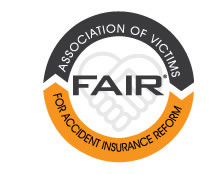Ontario auto insurance system ‘undoubtedly broken,’ personal injury lawyers say
Is The Insurance Company Trying To Upset Your Case?
$60 MILLION: Ottawa law office launches suit over Westboro bus crash
Survey: Most Canadians would switch auto insurers for $150 of savings
Attending a Clinic for Injuries after my Crash
Hodge v. Neinstein, 2019 ONSC 439 (CanLII), <http://canlii.ca/t/hx1ll
3. The Settlement Agreement
[21] The Settlement, if approved, will provide compensation to each Class Member who submits a Claim Form that satisfies the eligibility criteria stipulated in the Settlement Agreement. It is designed to provide an efficient, objective, paper-based process for Class Members to obtain recovery if they have eligible claims. The key terms of the Settlement addressing claims and compensation for Class Members may be summarized as follows:
a. For each Eligible Claim, the law firm will pay 30% of the amount referenced on the face of the account as being for “Party-and-Party Costs” or “Partial Indemnity Costs” or equivalent language specifically referencing costs. Under the Settlement, this amount is payable regardless of any discounts given to the Class Member at the time the account was rendered and regardless of any of the circumstances of the underlying representation of the Class Member.
b. The Settlement is based on claims made; there is no cap on the total amount to be paid by the Firm to the Class Members.
c. The Claims Administrator will determine a Class Member’s entitlement to compensation under the Settlement based on a straightforward, mechanical review of the face of the Client Documents alone.
d. The Claims Administrator, on a paper-based review of documents in the Class Member’s file, will determine whether a claim is an Eligible Claim, based exclusively on the following criteria in the Settlement Agreement:
i. The Class Member is not an Opt Out and has submitted a Claim Form by the Claims Deadline, including the waiver of solicitor-client privilege indicated on the Claim Form (Article 8);
ii. Subject to the Claims Administrator’s sole discretion to correct any omissions or clerical errors on a Claim Form, the Claim Form contains the requisite information (Articles 23 and 24);
iii. The Firm’s representation of the Claimant must have included:
1. a tort claim, which settled for at least $40,000 (Article 27(a)(i));
2. payment by the Claimant to the Firm for legal fees and/or costs (excluding disbursements and taxes) in respect of the settlement of the tort claim of at least $15,000 (Article 27(a)(ii)); and
3. the account the Firm rendered to the Claimant upon settlement of the tort claim references an amount for “party and party costs” or “partial indemnity costs” (or equivalent language specifically referencing costs), in addition to an amount taken for legal fees (Article 27(b)).
e. The settlement does not provide compensation in respect of disbursements and interest charges. The law firm disputed this claim on a variety of grounds, including the fact that the defendants in the personal injury action typically paid the disbursements rather than the Class Members. In any event, as a result of the class proceeding, the law firm changed its practices, and it no longer charges interest on out-of-pocket disbursements and it has discontinued several disbursement charges impugned by Ms. Hodge.
[24] The parties used sampling of the firm’s files to make an estimate of the value of the settlement. Based on the sample, it is estimated that there were will be 468 eligible claimants (26.67% of the estimated class of 1755 Class Members) with an average claim value of $8,656.39 Thus, it is estimated that the value of the settlement is approximately $4.05 million.
[25] Also based on sampling, Class Counsel estimates that the Class was entirely successful, the recovery would be approximately $21.8 million in costs and $5.3 million in estimated disbursement overcharges.



